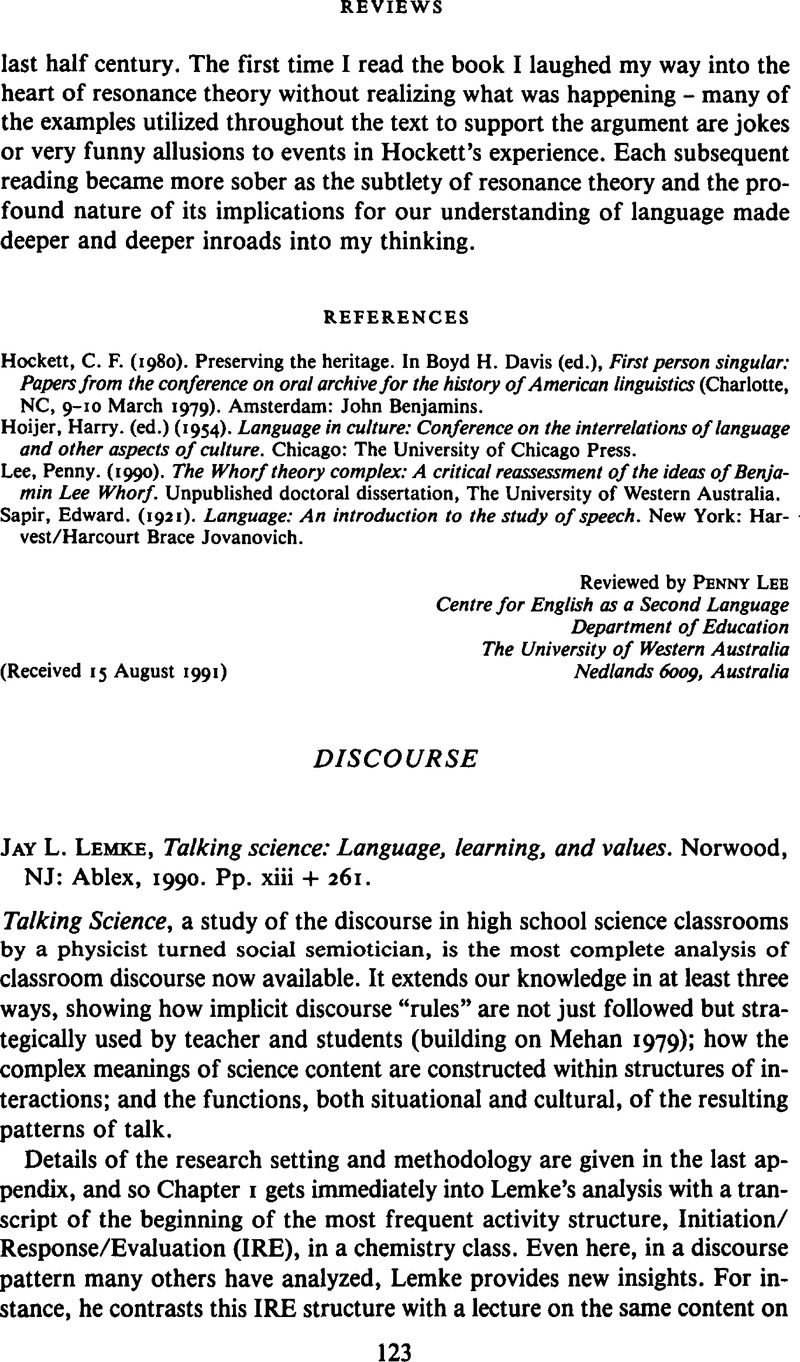No CrossRef data available.
Article contents
Discourse - Jay L. Lemke, Talking science: Language, learning, and values. Norwood, NJ: Ablex, 1990. Pp. xiii + 261.
Published online by Cambridge University Press: 18 December 2008
Abstract
An abstract is not available for this content so a preview has been provided. Please use the Get access link above for information on how to access this content.

- Type
- Book Review
- Information
- Copyright
- Copyright © Cambridge University Press 1992
References
REFERENCES
Alton-Lee, A., & Nuthall, G. (1991, April). What children's comments, call-outs, conversations and whispers reveal about learning processes in the lived culture of the classroom. Paper presented at the Annual Meeting of the American Educational Research Association, Chicago. (Christ Church, New Zealand: University of Canterbury)Google Scholar
Christie, F., Martin, J. R., & Rothery, J. (1989). Genres make meaning: Another reply to Sawyer and Watson. English in Australia 90:43–59.Google Scholar
Hasan, R. (1984). Coherence and cohesive harmony. In Flood, J. (ed.), Understanding reading comprehension: Cognition, language, and the structure of prose. Newark, DE: International Reading Association. 181–219.Google Scholar
Hymes, D. (1972). Models of the interaction of language and social life. In Gumperz, J. J. & Hymes, D. (eds.), Directions in sociolinguistics: The ethnography of communication. New York: Holt, Rinehart & Winston. 35–71.Google Scholar
Jakobson, R. (1960). Concluding statement: Linguistics and poetics. In Sebeok, T. A. (ed.), Style in language. Cambridge: MIT Press. 350–77.Google Scholar
Radway, J. (1984). Reading the romance: Women, patriarchy, and popular literature. Chapel Hill and London: University of North Carolina Press.Google Scholar
Sawyer, W., & Watson, K. (1989). Further questions on genre. English in Australia 90:27–42.Google Scholar
Scholes, R. (1982). Semiotics and interpretation. New Haven, CT: Yale University Press.Google Scholar


